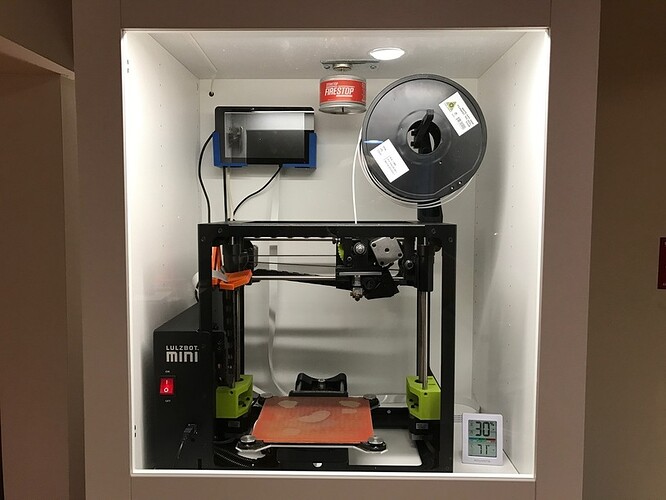My biggest concerns for a new 3D printer are reliability, print accuracy and the ability to use a wide variety of filaments. It’s probably best to check out reviews or user forums for a particular printer to judge reliability and accuracy. There are a few options to look for to maximize versatility. My first printer was limited to ABS filament due to proprietary filament cartridges, and was frustrating at times because of the difficulty in leveling the bed. I bought it because it was the first pre-assembled printer to sell for $500, and didn’t research it thoroughly. These are the things I would look for now, in no particular order.
All Metal Hot End - Some filaments require higher temperatures and can’t be used with some hot ends that contain non-metal parts. An all metal hot end should take care of any temperature limits.
Heated Glass Bed, easily leveled - Adhesion to the bed is critical to a good print, and most common filaments will adhere well to a heated glass bed. If glue or tape is necessary, glass makes for a nice flat surface to apply it. A level bed plays a big part in adhesion, so the leveling process should be precise and quick. The process of leveling the bed in my first printer was tedious, repetitive and could take an hour to get right. It was by far the most frustrating part of printing. Printing became fun again when I upgraded to an Ultimaker 2 and could easily level the bed in just a minute or so.
Reliable filament feeder - The filament feeder can limit the types of usable filaments. I couldn’t reliably print flexible filaments on my Ultimaker 2 because the feeder mechanism would sometimes chew up the filament to the point it couldn’t be fed forward. Flexible filaments are difficult to print especially with a printer that uses a Bowden tube (i.e. the feeder mechanism is separate from the print head and feeds the filament through a plastic tube into the head), but it had issues with other soft filaments like BronzeFill and nylon as well. I’ve since used a kit to upgrade the machine to an Ultimaker 2+, which addressed the feeder problem as far as I know, but I haven’t tried flexible filaments again. Check reviews and user forums for any known feeder problems. I should have been a little more diligent with the Ultimaker 2, the feeder mechanism was a known issue.
Easy access to the print head - Clogged nozzles can be an issue, particularly when switching between filament types that have different print temperatures. Using cleaning filament can limit clogs, but sometimes it will probably be necessary to use the Atomic Method. This requires feeding filament manually into the print head, so easy access makes the process easier. The ease of changing the nozzle is also a consideration. On some print heads the nozzle can simply be removed with a wrench, while others require some disassembly to access the nozzle. I’ve never had a clog so bad that I had to remove the nozzle, but it’s a possibility. And the ability to easily change to a different size nozzle can be useful in some cases.
An enclosure might be a consideration, but I wouldn’t rule out printers that aren’t enclosed. As others have pointed out, it’s pretty easy to build your own. In addition to being safer, an enclosure can help prevent warping when using filaments like ABS or nylon.
Hope this is helpful and I didn’t repeat advice others have given, I didn’t read all of the replies. Whichever machine you choose, that first successful print is going to be a thrilling moment.
